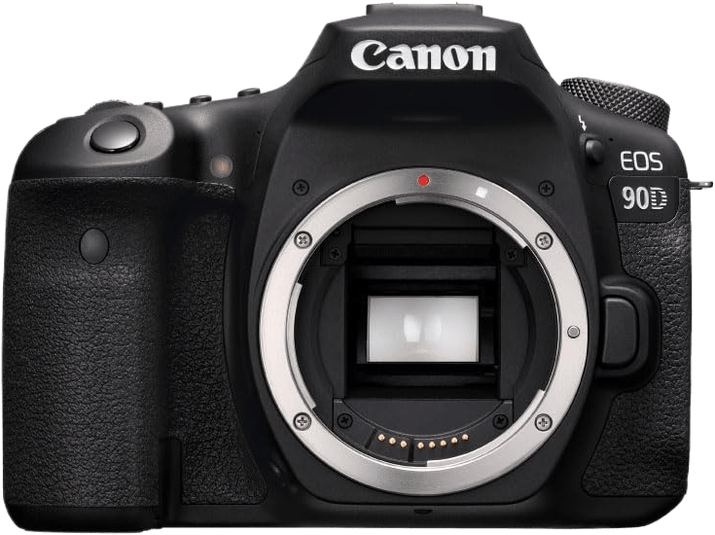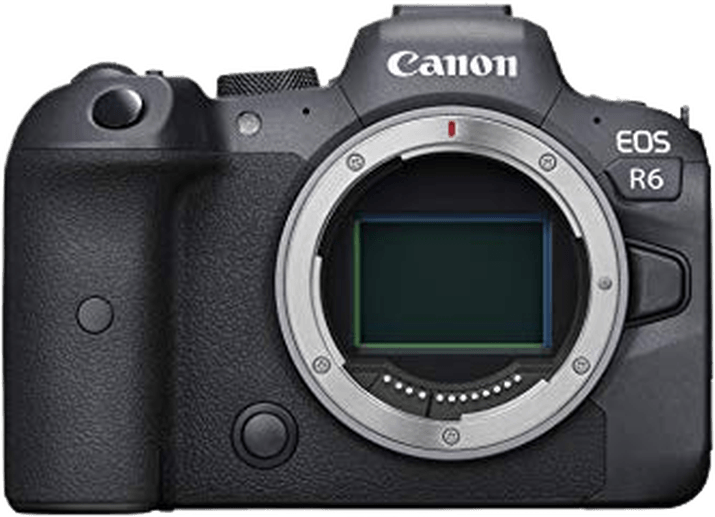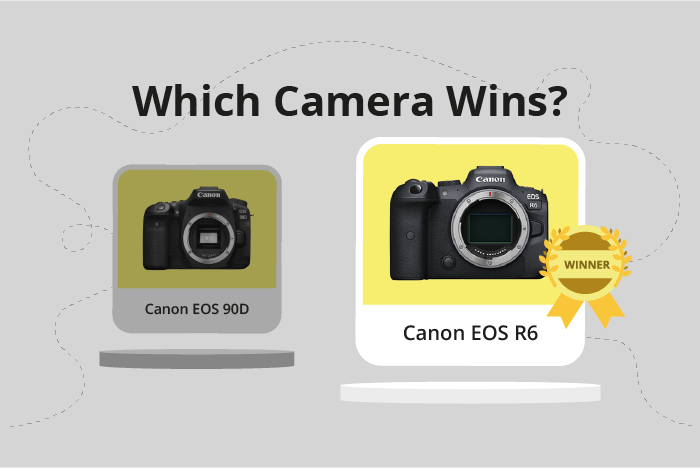Canon EOS 90D vs EOS R6 Comparison
Canon EOS 90D

Canon EOS R6

The Canon EOS R6 outperforms the Canon EOS 90D with a score of 80/100 compared to the latter’s 67/100. Both cameras were released in the same year, with the EOS 90D announced on October 28, 2019, and the EOS R6 on August 27, 2020. They share similar dimensions, with the EOS R6 being slightly smaller and lighter at 138 x 98 x 88mm and 680g, while the EOS 90D measures 141 x 105 x 77mm and weighs 701g.
The EOS R6’s higher score is due to its mirrorless design, providing better performance and image quality. However, the EOS 90D has an advantage in terms of affordability, with a launch price of $1199 compared to the EOS R6’s $2499.
Considering the specifications, the Canon EOS R6 is a better camera for those seeking top-notch performance and image quality, while the Canon EOS 90D offers a more budget-friendly option without sacrificing too much in terms of features and capabilities.
Canon EOS 90D vs EOS R6 Overview and Optics
The Canon EOS R6 outperforms the Canon EOS 90D in optics, scoring 79/100 compared to the 90D’s 62/100. Both cameras share some common specifications, such as having a CMOS sensor, but there are key differences that contribute to the R6’s superior performance.
The R6 has a full-frame sensor, which provides better image quality and low-light performance than the 90D’s APS-C sensor. Additionally, the R6’s Digic X processor contributes to faster processing and better image quality. The R6 also boasts an impressive DXOMARK sensor score of 90, compared to the 90D’s 58, further demonstrating its superior image quality.
While the 90D has a higher megapixel count at 33 compared to the R6’s 20.1, the R6 compensates with a faster shooting speed of 20 frames per second, double that of the 90D’s 10. This makes the R6 more suitable for action and sports photography. The R6 also features image stabilization, which the 90D lacks, allowing for sharper images and better performance in low-light situations.
The Canon EOS 90D does have its advantages, such as compatibility with both EF and EF-S lenses, while the R6 only supports the newer RF lens mount. However, this advantage may be less significant as more RF lenses become available and photographers transition to mirrorless systems.
Considering these factors, the Canon EOS R6 emerges as the better camera in terms of optics, offering superior image quality, low-light performance, and faster shooting speeds. The 90D may still appeal to photographers who require a higher megapixel count and prefer the EF/EF-S lens compatibility.
Canon EOS 90D vs EOS R6 Video Performance
The Canon EOS 90D and the Canon EOS R6 have identical video scores of 91/100, making it a tie for the winner in this comparison. Both cameras share several common video specifications, including a maximum video resolution of 4K, maximum video dimensions of 3840 x 2160, a maximum video frame rate of 120fps, and built-in time-lapse functionality.
The Canon EOS R6, however, has some advantages over the 90D. It features in-body image stabilization (IBIS), which helps to minimize camera shake and improve the overall quality of the footage. This feature is particularly useful for handheld shooting, as it allows for steadier and smoother video capture. Additionally, the R6 has a full-frame sensor, providing a larger field of view and better low-light performance compared to the 90D’s APS-C sensor.
On the other hand, the Canon EOS 90D offers some benefits as well. It has a lower price point, making it a more affordable option for those looking to invest in a high-quality camera with strong video capabilities. Furthermore, the 90D’s lighter weight and smaller form factor make it a more portable and convenient option for those frequently on the go.
Taking these factors into account, the Canon EOS R6 is the superior choice for those seeking advanced video features, such as in-body image stabilization and a full-frame sensor. However, the Canon EOS 90D remains an excellent option for those prioritizing affordability and portability while still requiring high-quality video capabilities. Both cameras offer impressive video performance, making either choice a strong contender for various video needs.
Canon EOS 90D vs EOS R6 Features and Benefits
The Canon EOS R6 wins in the features comparison with a score of 85/100, while the Canon EOS 90D scores 83/100. Both cameras share several common specifications, such as a 3-inch touchscreen, flip screen, WIFI, and Bluetooth connectivity. However, neither camera has GPS functionality.
The Canon EOS R6 surpasses the 90D with its screen resolution of 1,620,000 dots, providing a sharper and more detailed display. This higher resolution offers better image preview and menu navigation, enhancing the overall user experience.
On the other hand, the Canon EOS 90D has a slightly lower screen resolution at 1,040,000 dots. Although it falls short in this aspect, the difference may not be significant enough to affect the overall performance or user experience. Both cameras have impressive feature sets, and the 90D still delivers high-quality results.
In comparing the features of these two cameras, the Canon EOS R6 takes the lead due to its superior screen resolution. However, the Canon EOS 90D remains a strong contender with its nearly identical specifications. Users should consider their specific needs and preferences when choosing between these two cameras, as both offer reliability and performance.
Canon EOS 90D vs EOS R6 Storage and Battery
The Canon EOS R6 outperforms the Canon EOS 90D in storage and battery with a score of 68/100 compared to the 90D’s 48/100. Both cameras accept SD, SDHC, and SDXC memory cards, with UHS-II compatibility. However, the R6 has a clear advantage with two memory card slots, providing more storage options and flexibility.
The battery life of the Canon EOS 90D exceeds that of the R6, offering 1300 shots per charge compared to the R6’s 360 shots. Despite the 90D’s longer battery life, the R6 benefits from USB charging capabilities and uses the newer LP-E6NH battery type, making it more convenient for on-the-go charging.
Although the Canon EOS 90D has a longer battery life, the Canon EOS R6’s dual memory card slots and USB charging capability make it the superior choice for storage and battery requirements.
Alternatives to the Canon EOS 90D and EOS R6
Are you still undecided about which camera is right for you? Have a look at these popular comparisons that feature the Canon EOS 90D or the Canon EOS R6:

